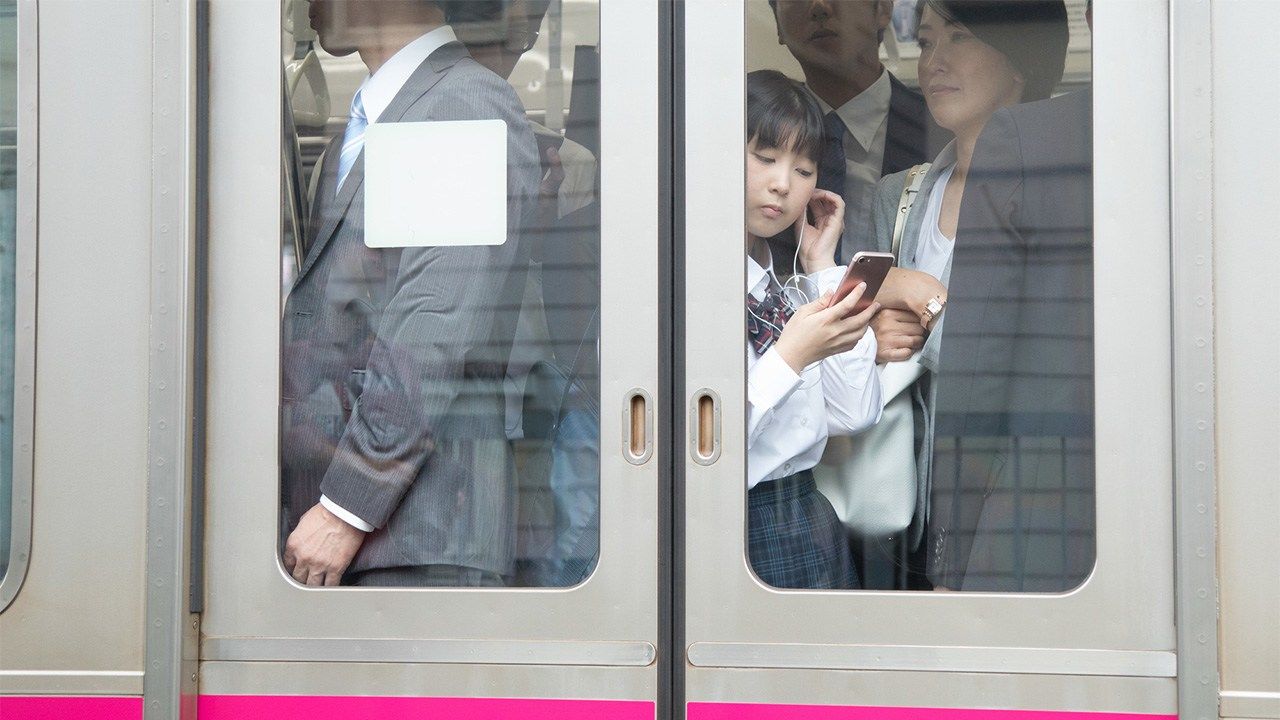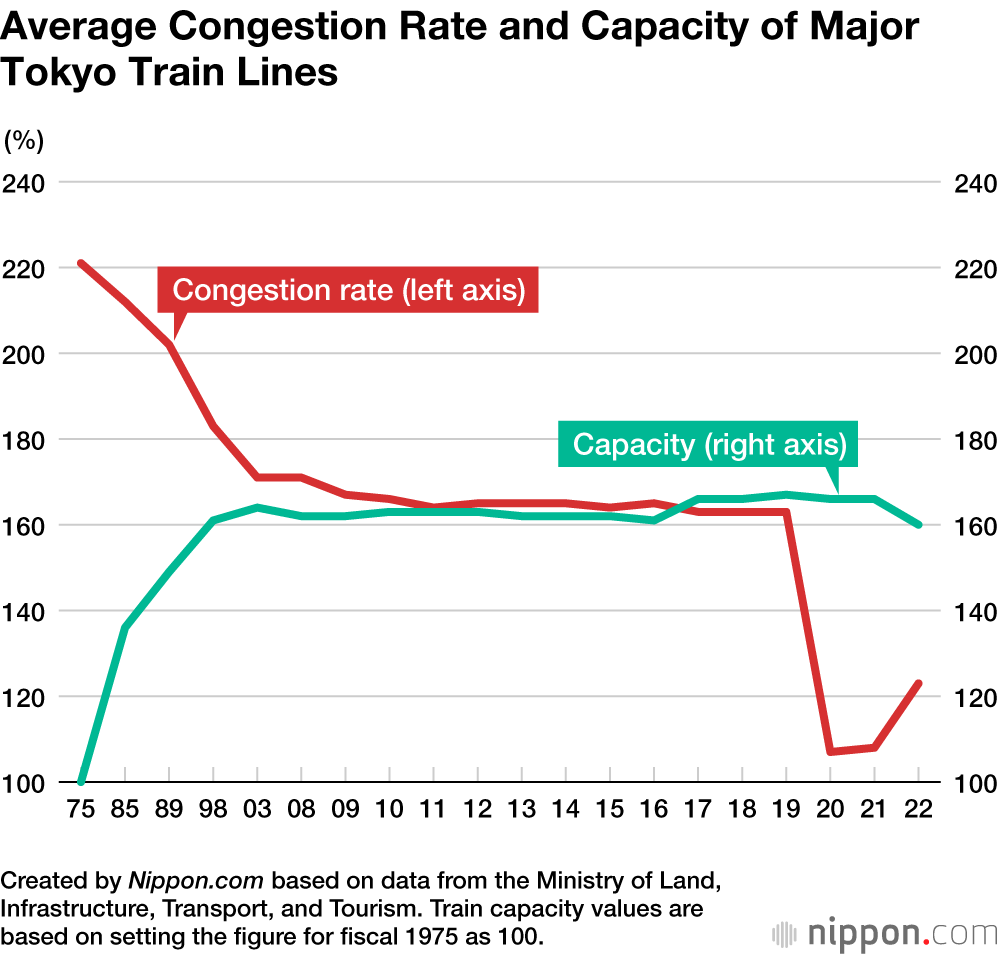
Commuter Train Lines More Congested in 2022
Society Economy- English
- 日本語
- 简体字
- 繁體字
- Français
- Español
- العربية
- Русский
A recent report of the Ministry of Land, Infrastructure, Transport, and Tourism shows that rail congestion rates in Japan’s three major metropolitan areas increased by 5 to 15 percentage points in fiscal 2022. However, the peak-hour commute is more tolerable than before the COVID-19 pandemic, when trains were far more crowded.
The ministry report found that the average rate of congestion during peak morning hours for the Tokyo, Osaka, and Nagoya metropolitan areas, respectively, was 123% (up 15 points year on year), 109% (up 5 points), and 118% (up 8 points). This is the first major increase in three years, following a major drop in fiscal 2020 due to the pandemic and a basically unchanged situation in fiscal 2021.
The graph below shows the changes in rate of congestion and train capacity for 31 major train lines in the Tokyo metropolitan area. Until around 2000, train capacity could not keep pace with the increase in passengers, so that the rate of congestion reached as high as 180% to 200%. In the years leading up to the pandemic, the rate was hovering around the 160% range.
A congestion rate of 120% is 20% more than the maximum occupancy (a situation where passengers are able to either sit down, hold on to a strap, or hold on to a bar near the train door), so there is almost no direct physical contact with other passengers.
The table below shows what in fiscal 2019 were the most crowded train lines in the three metropolitan areas during morning rush hours and their rates of congestion for fiscal 2019 and 2022.
Changes in Train Congestion Rate at Rush Hour in Japan’s Three Main Metropolitan Areas
Tokyo Area
| FY 2019 | FY 2022 | |
|---|---|---|
| Kiba to Monzen-Nakachō (Tōzai Line) | 199 | 138 |
| Musashi-Kosugi to Nishi-ŌI (JR Yokosuka Line) | 195 | 124 |
| Kinshichō to Ryōgoku (JR Sōbu Line) | 194 | 127 |
| Ikejiri-Ōhashi to Shibuya(Den’entoshi Line) | 183 | 125 |
| Shimo-Ochiai to Takadanobaba (Seibu-Shinjuku Line) | 164 | 123 |
Osaka Area
| FY 2019 | FY 2022 | |
|---|---|---|
| Kanzakigawa to Jūsō (Hankyū-Kobe Line) | 149 | 134 |
| Umeda to Yodoyabashi (Midōsuji Line) | 148 | 123 |
| Mikuni to Jūsō (Hankyū-Takarazuka Line) | 146 | 118 |
Nagoya Area
| FY 2019 | FY 2022 | |
|---|---|---|
| Jingū-Mae to Kanayama (Meitetsu Line) | 149 | 132 |
| Sakō to Meitetsu-Nagoya (Meitetsu Line) | 147 | 130 |
Created by Nippon.com based on data from the Ministry of Land, Infrastructure, Transport, and Tourism.
Congestion rates in the Tokyo metropolitan area prior to the pandemic were as high as 200% (a level at which there is considerable body contact, but a person can just manage to read a magazine); however, the congestion rates in fiscal 2022 were far lower for nearly every train line.
The train line with the highest congestion rate in fiscal 2022, according to publicly available data, was the Nippori-Toneri Liner between the Akado-Shōgakkōmae and Nishi-Nippori stations, at 155%; followed by the Nishitetsu Kaizuka Line between the Najima and Kaizuka stations, at 154%, and the JR Saikyō Line between the Itabashi and Ikebukuro stations, at 149%. Congestion rates remain high on certain train lines due to the difficulty in increasing capacity due to facility constraints or other factors.
(Translated from Japanese. Banner photo © Pixta.)
